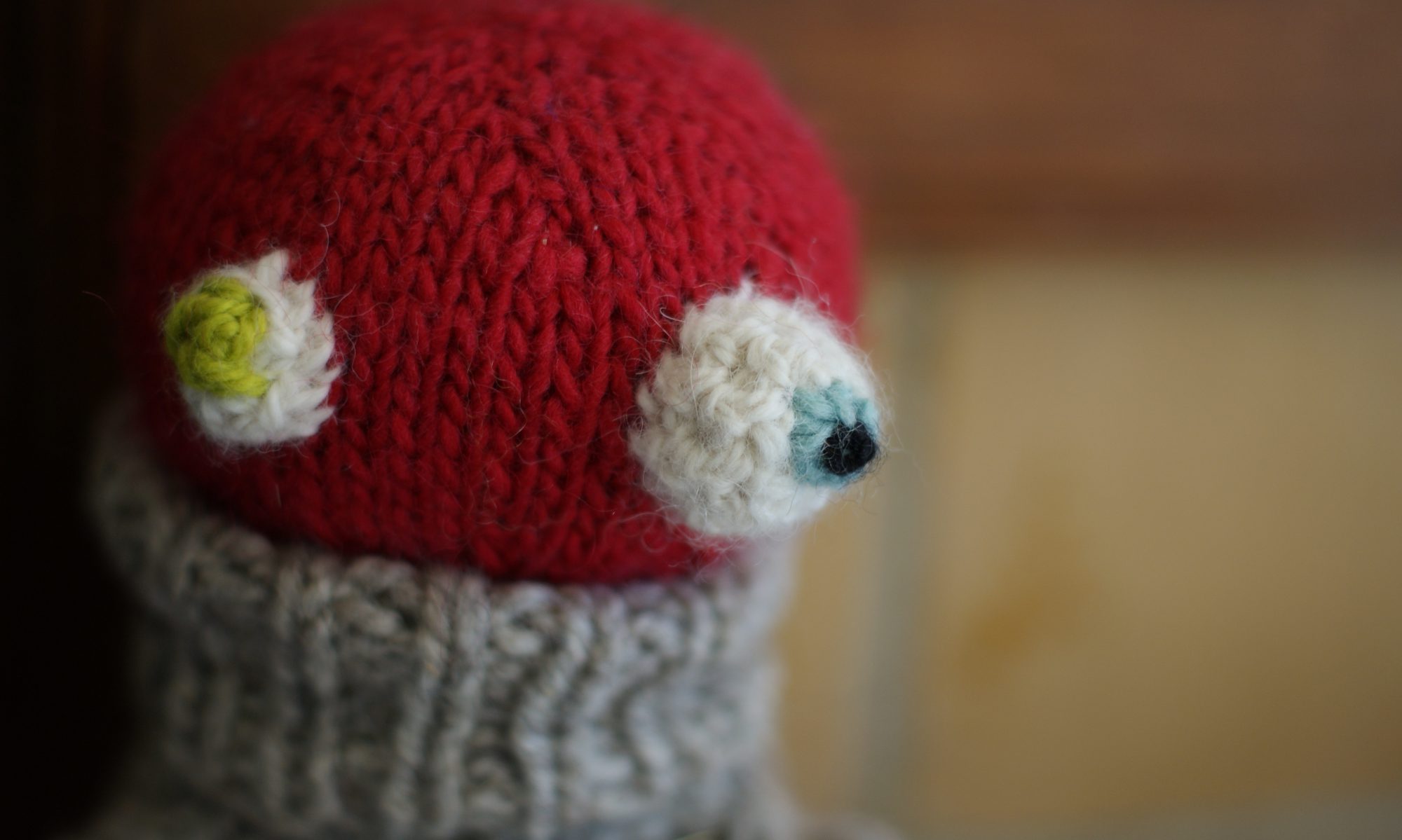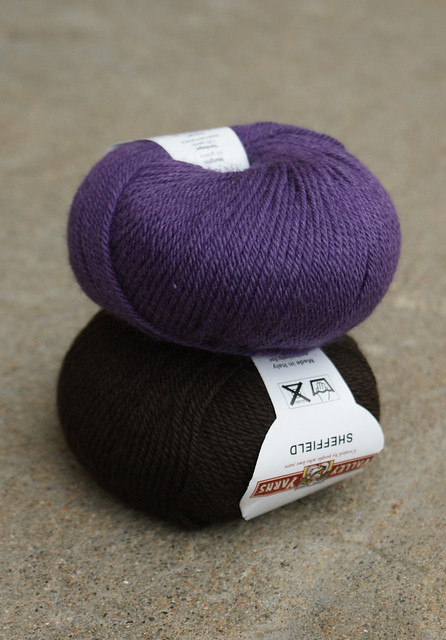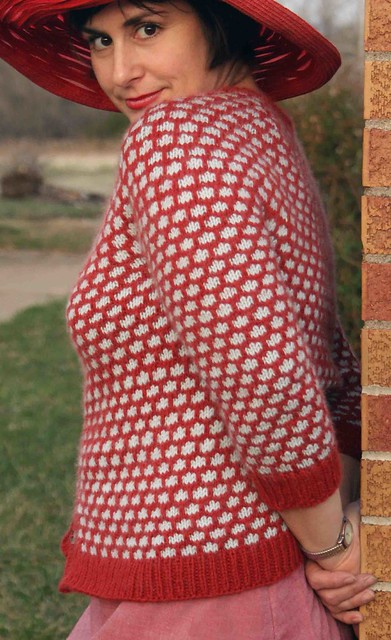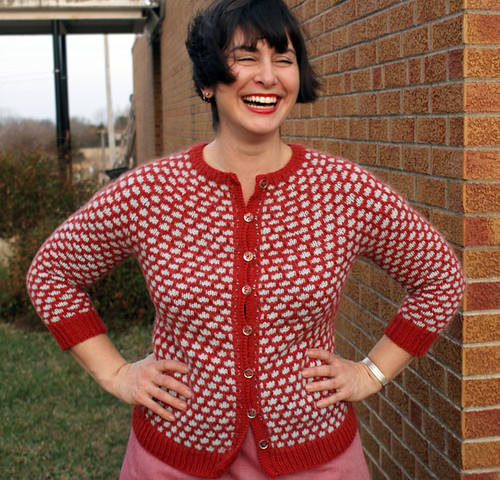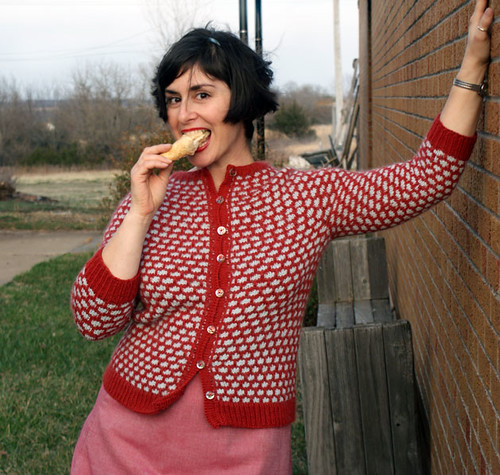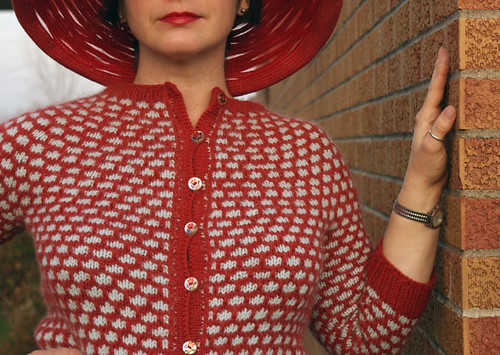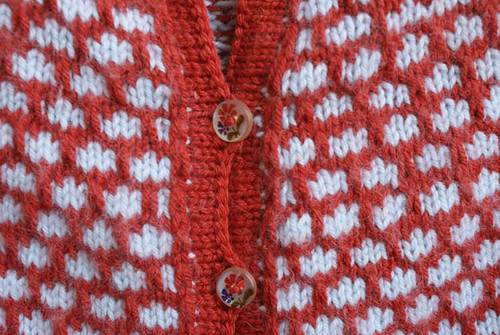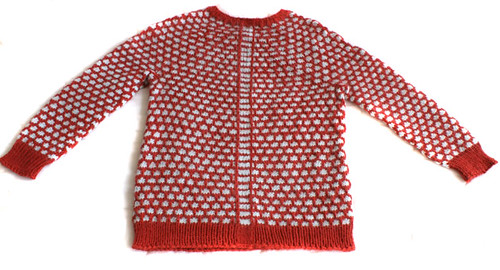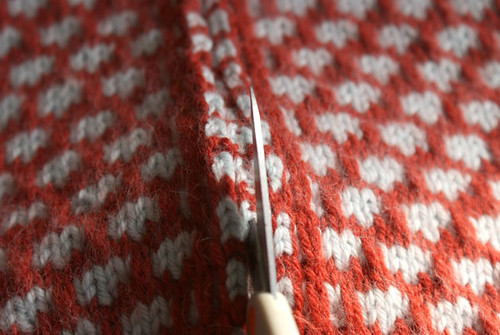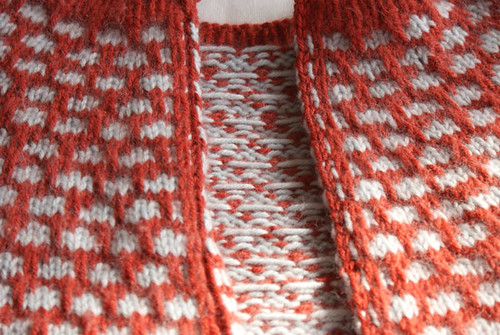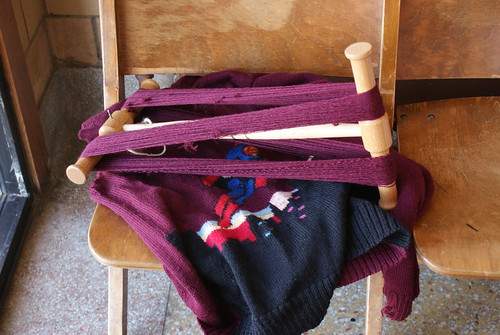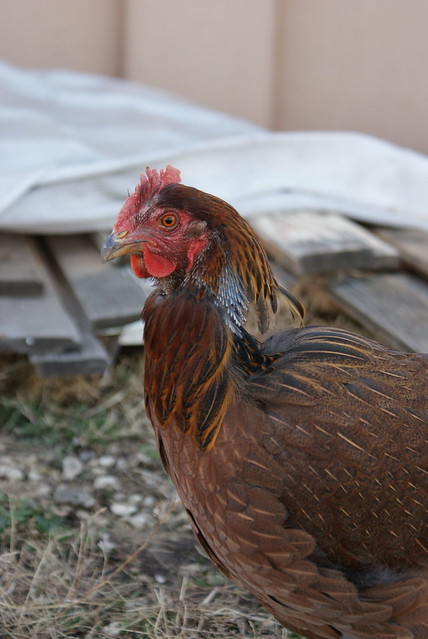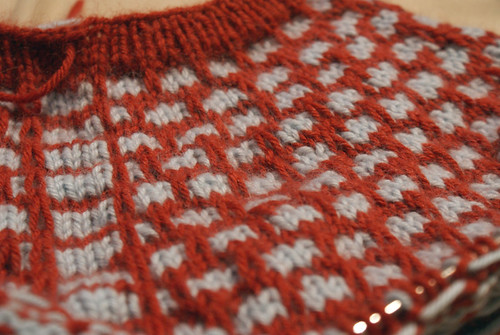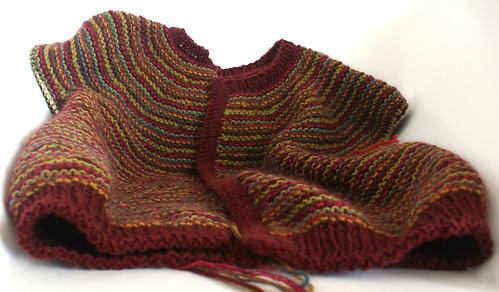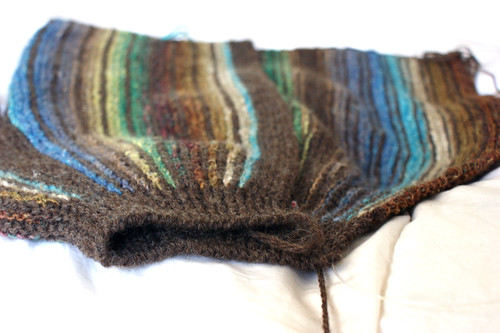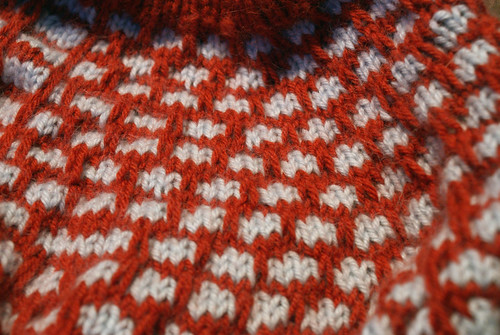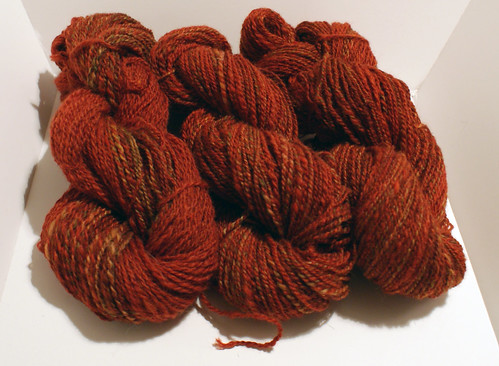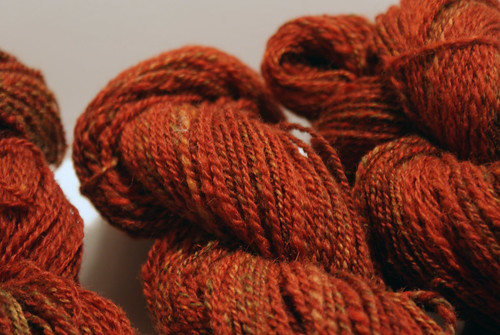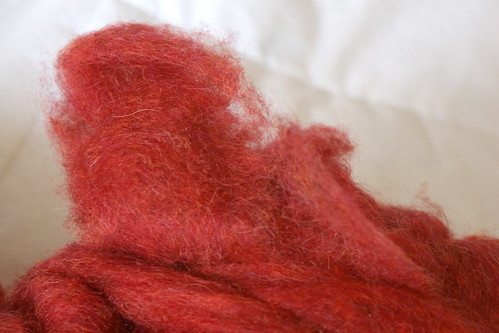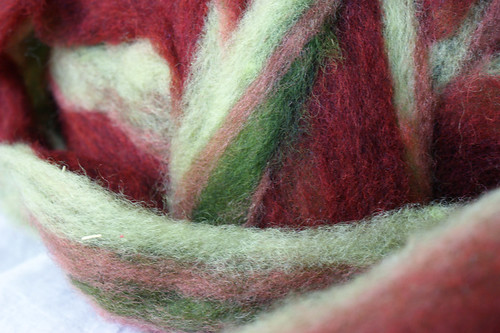Okay, I forgot my stupid memory card, so I couldn’t take any pictures, but the Missouri Fiber Retreat was super fun! Marta, Jen & I all took different classes, which was awesome, because I got a sense of what I might like to take next year. Definitely basket making, which didn’t appeal to me at all before I saw Jen’s basket.
Anyway, here’s my wrap-up:
Friday afternoon, I took the indigo dyeing class with Bex Olinger. She had 3 different kettles going for the class: one indigo thiox/lye vat, one woad thiox/lye vat, and one saxon (indigo/sulfuric acid) bath. We learned how to dip/oxidize fiber in the thiox/lye vats, how to mix stock solutions, how to balance the vats, and lots of wonderful historical & cultural information about indigo. It was most excellent!
The really cool thing about the thiox/lye vats, which are pretty much the more modern version of the traditional indigo vats (but made with checmicals instead of pee), is that you have to soak the fiber and then expose it to air to activate the blue color. The bath itself is green, and you have to be careful not to aerate it. When you first pull the fiber out, it’s green as well, but as soon as the oxygen starts to hit it, it turns blue before your eyes! It’s really fun to watch, and it happens each time. The whole process is not for the impatient though, as dark colors can take dozens of dips to achieve, and you have to balance your vat (both in pH and chemicals), or you can actually end up removing the color from your fiber! We had this happen toward the end with the woad vat.
The first vat was woad, which comes from the cabbage family and can be grown locally (though you need a special exemption and have to take precautions because it’s considered a noxious weed).
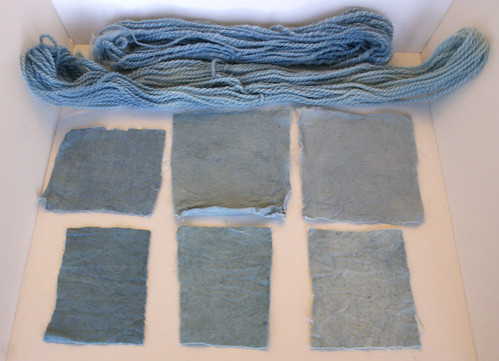
The samples show 3, 4 and 5 dips (from right to left). The top skein is from the dyed corriedale combed top, which has been spun & plied (so gradations are gone); followed by wool yarn, cotton muslin, and raw silk.
The next vat was indigo:
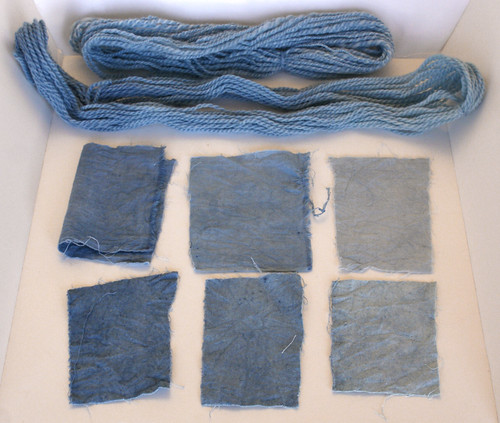
Again, 3, 4 and 5 dips of the same samples.
The last pot was a saxon blue vat, which uses indigo and sulfuric acid. Unlike the other vats, this one doesn’t require oxidation and makes brilliant blues. The wool turned a gorgeous peacock blue.
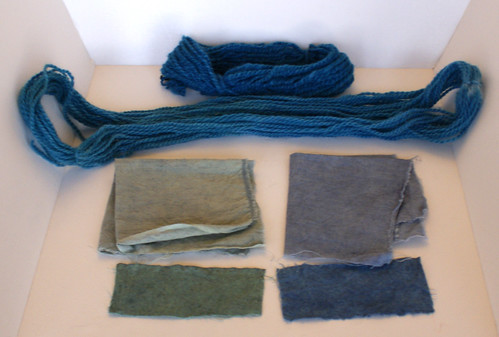
The top samples were wool, the first one was combed top that was spun so the colors blend. The other three samples show saxon blue dyed over samples dyed rich yellow with Osage orange, while the right samples were dyed on natural ecru colored fabric. Wool yarn, cotton muslin, and raw silk on the bottom.
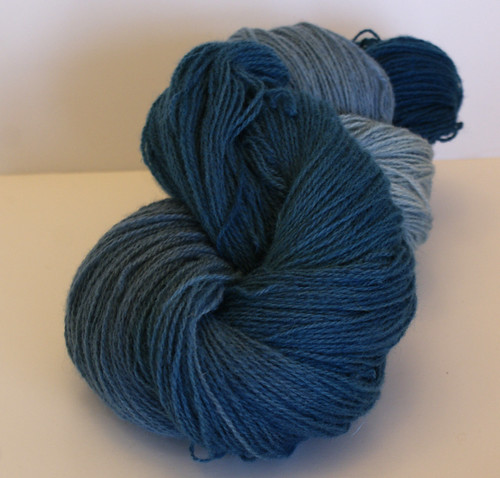
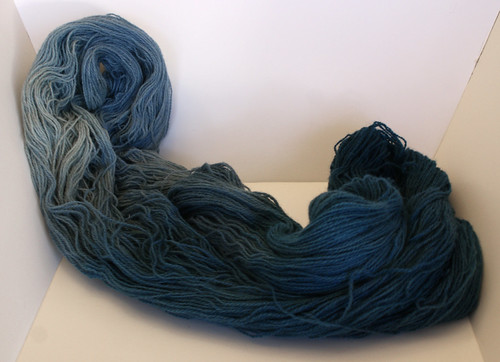
My personal project for the class was Shetland wool lace in a pale heather gray. First I soaked it all in woad, removed to oxidize, dipped about a third in indigo, oxidized. Then I rewet the whole skein to get a soft, watery transition and dipped it to about the 2/3 point in saxon, then immediately pulled it out about halfway, then pulled out another 3 inches ever 10 minutes. I’m really happy with the result!
Saturday evening, Bonnie Ahrens gave an excellent keynote speech on felting and her inspirations and travels.
Saturday morning, I took an entrelac class with Tamara Lasely. Entrelac in the round isn’t overly difficult, but it is complicated and physically challenging, since you have to knit backwards and, even harder, pick up backwards. I don’t know that it’s a technique I’ll use much, but I’m glad to know how to do it, both because it’s one more thing to check off on my knitting master list, and because I think it would have been very difficult to learn on my own, and Tamara was a great teacher. I never thought I’d like any entrelac clothing, but Tamara had on this amazing single color lace entrelac skirt that was fantastic.
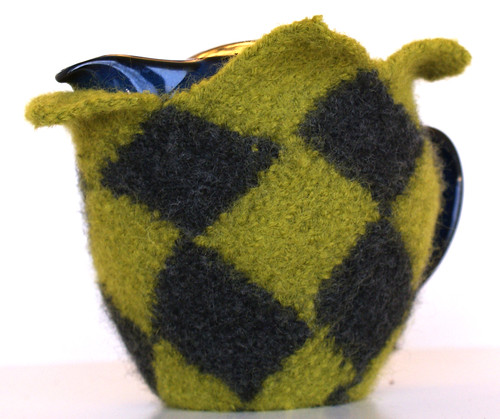
We made a 2-color sampler bowl. Since I’m an over-achiever, I worked in a couple extra rows of entrelac to make more of a vase shape, and after I felted it, I cut a slit for the handle of my little Bee House teapot, which wanted a cozy.
Saturday afternoon I took the soap making class with Gary Olds. It was fantastically informative and interesting, and I’m really glad I got to see exactly what the different phases looked like. The best part of the class was the math, if you can believe it. He explained the why and how of formulations and showed us how to figure out the correct formulas with the fats we have, and how different fats contribute different properties. If I had seen the same information in a book, I would have given up before starting, but now it’s crystal clear and seems perfectly easy.
I stuck to my resolution not to start any new hobbies this year by NOT buying the nice wooden molds he had on offer. But I do think I’m going to make a single batch at home with what I have on hand. Since I already have all of necessary tools and all the ingredients but lye, and since I really want to make a batch to cement the process in my mind, and since the point of the resolution was to stop me from buying up a ton of gear and falling into the money and time suck new hobbies generate, I think I’m spiritually safe from breaking the resolution if I stick to a single batch using only what I have on hand. (Wow, that was one hell of a sentence.) I’ll use either juice cartons or a clementine box lined with foam core for my mold, and I’ll render this giant bag of beef fat I have in the freezer for my fat.
Sunday morning was felt boots with Joi Chupp. I went a little bananas and made them really gaudy, for which I’m feeling a fair amount of remorse, but the good news is that it’s exactly what I wanted: thick, hard felt boots, much like my valenki. We started with a flat linoleum resist that we made ourselves to felt the basic shape, and when it’s well felted, you cut it off the resist and continue to felt it on and off your foot until it’s the desired shape and fit. I’ll definitely buy some linoleum scraps and demo the resist technique (which also works for mittens, bags, hats, etc.) at the next Felt School.
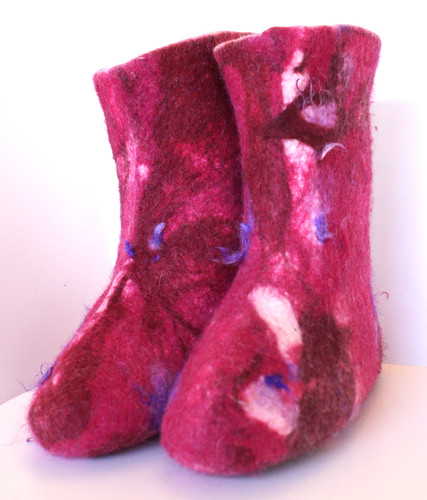
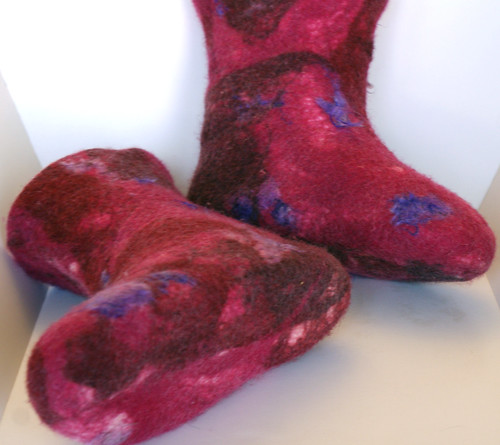
I made them a good deal thicker than most of the class (since I was the only one to use up my full half pound of wool, plus some extra I bought during class), and I also made my template extra large to begin, because I knew I wanted thick boots. I might try again when it warms up and I can work on them outside in the sunshine. But they came out nice and thick, not quite as heavy as my valenki, but the same method would totally work to make them–I’d just need to start with a somewhat bigger resist and several more layers of wool.
In class, we used white merino blend batts–I pulled mine into large, thin layers like a silk hankie–then I made the final layer from bits of pink batting I bought from Bonnie Ahrens’ booth. Next time, I’ll use colored wool throughout, in different colors so I can keep track of the layers and have a nice color sandwich when I cut them off the resist. Maybe woodsy greens?
